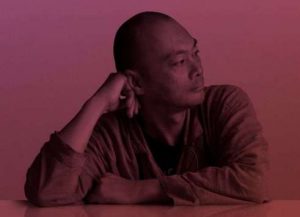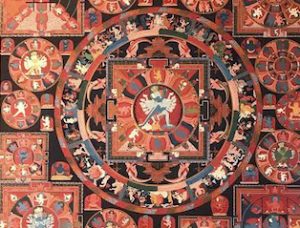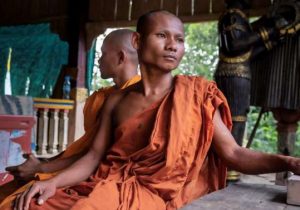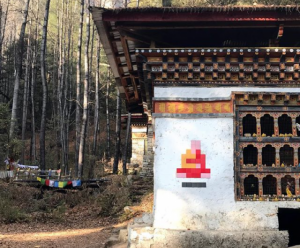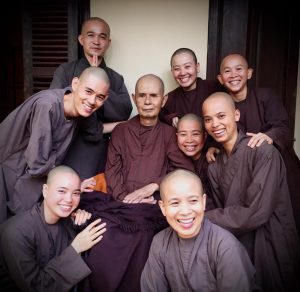Part one of two interviews
The journey of the Whispering Crane, from the peaks of Tibet to the heartland of China, is a testament to the enduring power of cultural exchange and the unbreakable bond between body and spirit.
High up in the Himalayan mountains of the Qinghai–Tibet Plateau, monks have perfected their martial arts for centuries. These arts, blending physical prowess and spiritual discipline, are skilful means that lead the warriors of armed and unarmed combat to enlightenment. The warrior’s path is outwardly the martial way, but the inner goal is no different from that of any other Buddhist practitioner.
There have been two dynasties in China, one Mongol and the other Manchu, that consciously drew on Vajrayana Buddhism as a practice for the imperial court as well as a legitimizing religion. During the Yuan dynasty (1271–1368), Kublai Khan, a patron of Tibetan Buddhism, forged strong bonds with the lamas of Tibet, who became spiritual protectors and political confidants of the khans.
Then, at the dawn of the Qing dynasty (1644–1912), emperors once again embraced Vajrayana Buddhism, often summoning monks from Tibet to serve as spiritual advisors and diplomats. The Yongzheng Emperor (r. 1722–35) honored these lamas in his palace of Yonghe, a sanctuary for spiritual practice and martial arts training. The Yonghe complex, in which he had been born, would be converted by his son the Qianlong Emperor (r. 1753–99) into the Yonghe Temple in 1744.
Tibetan martial arts are directly related to the White Crane style, and were developed by a Qinghai-born lama called Adatuo in the 16th century, spread to China, enriching Shaolin traditions. The fighting method of Lion’s Roar, also devised by Adatuo, evolved into Tibetan White Crane, Lama Pai, and Hop Gar Kung Fu, influencing the Qing Court’s martial arts. In southern China, Tibetan White Crane influenced Wing Chun, a close-range combat style that was popularized by Bruce Lee. White Crane, in turn, was a critical Chinese influence on Okinawan karate, such as Goju-ryu and Shorin-ryu. The legacy of Tibetan martial arts, woven by spirituality and strength, continues to inspire and evolve.
Film director Laurence J. Brahm, renowned for his award-winning trilogy In Search of the Lotus-born Master, debuted his latest film and book, Gate of Nine Dragons: Searching for Kung Fu, on 27 August at JP Cinema in Hong Kong. This movie explores the rich lineages of Chinese martial arts, delving into Northern and Southern styles, inner and outer practices, and how martial arts from other countries draw their heritage from Shaolin. On top of being an award-winning director and producer, Laurence is an explorer, author, and founder of Shambhala Studio, which specializes in films related to Himalayan culture and Asian martial arts. With his background as a global lawyer, he is also a senior international researcher at the Center for China and Globalization think tank. He serves as a policy advisor at the China Foreign Experts Bureau.
In this interview, Laurence shares how his devotion to Vajrayana Buddhism and its martial traditions fuels his passion for filmmaking. Gate of Nine Dragons explores the spiritual journeys of various masters of kung fu and other martial art schools, including tai chi and Shotokan karate. In the book and film, Laurence asks them about their guiding philosophies and martial arts’ deep connections between mind, body, and spirit. All of them are Laurence’s friends, and some are his teachers. Laurence himself is a fifth-degree black belt in Shotokan karate, a fourth-generation lineage holder in Zhangjia kung fu, and has extensively studied Wing Chun, qigong and Shaolin Five-Animal neigong. He is also a longtime practitioner of Tibetan secret yoga.
In The Gate of Nine Dragons, the journey begins at the Shaolin Temple, built in 497 AD. The temple’s Chinese translation, meaning “young forest,” is popularly known as the cradle of Asian martial arts. The fabled figure of Bodhidharma was an Indian monk who introduced moving exercises from Indian yoga to strengthen the Shaolin monks, evolving into Chan (Zen) Buddhism and Shaolin kung fu. As the temple faced bandit attacks, the monks focused less on Buddhism and more on martial arts, developing the legendary Shaolin five animal styles: tiger; crane; leopard; snake; and dragon.
Laurence’s search for the origins of kung fu was rooted in the ancient Chinese philosophy of Tian Di Ren (Heaven, Earth, and Humanity). He guides the audience through his portal of transformation in a series of nine gates, which represent the inner psyche that the practitioner must master to develop his neigong or internal exercises. These nine gates are: perseverance; loyalty; balance; change; centering; harmony; flow; emptiness; and wushu.
“Buddhist practice is about seeking the Middle Path. When you meditate and align yourself with the right frequency, you avoid extremes and duality. True control is found in letting go, reaching serene emptiness,” Laurence mused, noting the profound peace that can be found on encountering this ancient wisdom.

Fondly contemplating Padmasambhava, his primary teacher, Laurence said: “His crazy wisdom breaks down and reconstructs visualizations, revealing deeper insights and transcending space and time. This wisdom leads to emptiness, the essence of martial arts meditation. The very word ‘martial arts,’ ‘wushu,’ actually mean nonviolence. The character wu is misunderstood to mean ‘martial,’ but it combines ‘stop’ and ‘weapons,’ symbolizing the end of conflict.” At higher stages, practitioners become peaceful, avoiding confrontation to foster harmony.
In the movie, Laurence tells a tale of the dynamic Tibetan yoga tradition known as Tsalung (qigong), from the treasure trove of Yantra Yoga. With movements as vigorous as those in Shotokan, Shito-ryu, and Goju-ryu karate, this practice is designed to unlock the chakras and energize the fields that govern health and spiritual ascension. This tradition is rich with influences from Buddhism, shamanism, Hinduism, and Daoism. Laurence’s scholarly journey uncovers breathwork with roots found in Daoist practices, a testament to the vibrant exchanges made along the fabled Silk Road and Tea Caravan Trail.

Laurence reflects on higher stages of practice where tranquility reigns supreme—a serenity that perhaps fueled Tibetan martial arts’ spread by monks to neighboring countries such as China in the 16th century. These martial arts are not just physical routines; they are spiritual odysseys that harmonize internal qi with external techniques and muscle movements. Laurence sees these arts not merely as physical endeavors but as kinetic meditation—a dance toward Nirvana through disciplined movement.
To this martial arts lineage holder, the esoteric notion of Shambhala symbolizes inner peace, mirroring the Lotus-born Master’s journey. The real challenge is within; mastering oneself conquers all conflicts. Martial arts, as kinetic meditation, blend together Tibetan yoga, qigong, and more, fostering self-growth and health. Understanding breath, energy, and yin-yang balance is vital. Both men and women can harmonize their energy, achieving profound inner peace and fantastic health.
Laurence opened up about how making the film deeply influenced his personal spiritual journey: “I practice a lot of martial arts, and when I interview these masters, the first thing they want to see is if I can hold my own.” If he can, they will engage with him; if not, they will not respect or talk to him. Often, they test him by throwing punches and he has to be able to respond. To earn their respect, he needs to be on their frequency.
“The martial arts pilgrimage furthered my interest in the Lotus-born Master’s pilgrimage, I saw many things in the Zen tradition and the Vajrayana tradition that are actually parallel, even at the highest levels of Dzogchen.”
As he recounted his visit to Shaolin, he shared: “It was a re-awakening, a journey to reconnect with the roots of my practice and delve much deeper. . . . During the process of preparing and making the film, I transitioned from external martial arts to internal martial arts.”
His documentaries are like windows into the days of pioneering spiritual masters, revealing how these ancient practices are interlinked and how they offer tools for navigating life’s tumultuous seas as we row toward the shore of spiritual awakening. Laurence’s quest to uncover the secrets of Tibetan Buddhism and its influence on martial arts was filled with challenges that he transformed into opportunities for personal growth. This journey brought him profound spiritual insights, which he now passionately shares through his creative works. In my next article, I will explore these spiritual insights from his “Lotus-born Master” projects in greater depth.
“Because to me, searching is a quest. We are all on a quest.”
Laurence Brahm will be back . . .
Related features from BDG
Transcendent Treasures: Unveiling Buddhist Art at Sotheby’s Maison Hong Kong
Buddhism and the Martial Arts: A Conversation with Scott Park Phillips
Related blog posts from BDG Tea House
Chengde, Mandala of Chinese Emperors









